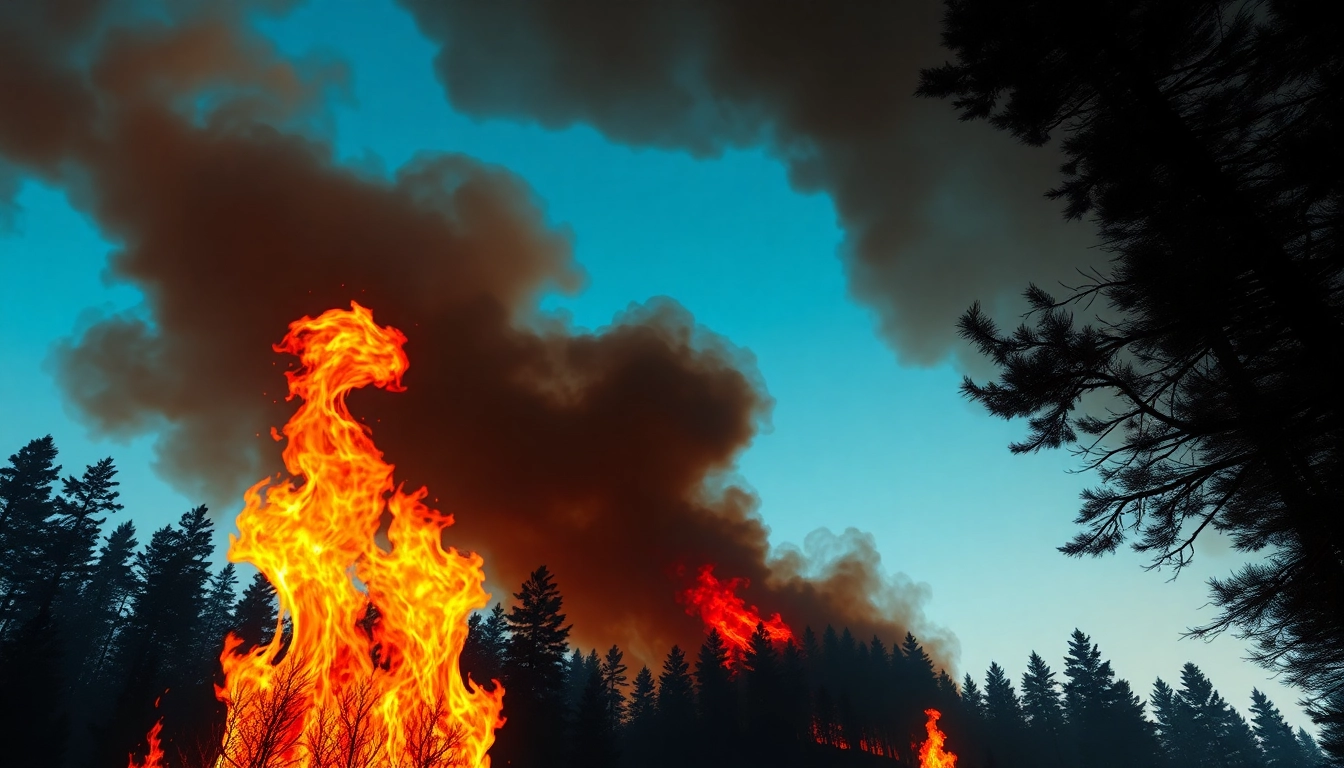Overview of Wildfire Events
Wildfires have emerged as significant natural disasters around the world, characterized by their ability to consume vast areas of land, threaten ecosystems, and impact human lives. Understanding wildfire events involves delving into their definitions, causes, effects, and management strategies, which are essential for both prevention and preparedness. This article aims to provide a comprehensive view of wildfire events, enabling readers to grasp their complexities and the multifaceted nature of their impacts.
Defining Wildfire Events
A wildfire, also known as a forest fire, bushfire, or grass fire, refers to any uncontrolled fire that burns in wildland areas, including forests, grasslands, and scrublands. These fires can occur naturally, primarily from lightning strikes, or be ignited by human activities, such as campfires, discarded cigarette butts, or arson. The classifications of wildfires can include ground fires (burning organic material beneath the surface), surface fires (burning grass, shrubs, and small trees), and crown fires (spreading from treetop to treetop).
Why Wildfire Events Occur
Wildfires typically occur under specific conditions that include dry weather, high temperatures, and strong winds, which contribute to the fire’s ability to ignite and spread quickly. Major factors influencing the ignition and spread of wildfires are fuel availability, which comprises vegetation and dead organic material; weather conditions, such as drought or humidity; and topography, including the lay of the land, which can either facilitate or hinder fire movement.
Global Perspectives on Wildfire Events
Wildfires occur globally, with regions such as California, Australia, and the Mediterranean facing recurrent wildfire threats. In the United States, the National Interagency Fire Center tracks wildfire activity and provides information regarding current and forecasted wildfire conditions. Their resources include significant wildland fire potential outlooks that help communities prepare for and respond to potential wildfire events.
Causes and Contributors to Wildfire Events
Naturally Influencing Factors
Natural occurrences are strong influencers of wildfire events. Lightning strikes account for a portion of wildfires, especially in remote areas. Other specific conditions like volcanic eruptions can also ignite wildfires. Furthermore, pine beetle infestations, which weaken trees, can create an influx of highly flammable materials that may easily catch fire during dry spells.
Human Activities and Wildfire Risks
Human activities play a significant role in wildfire ignition and spread. From outdoor recreation that neglects fire safety regulations to industrial activities producing sparks, human error can lead to devastating consequences. Transportation networks traveling through wildlands are also prime locations for accidental ignitions, particularly when mechanical failures produce sparks that can ignite dry vegetation.
Climate Change and Its Impact on Wildfire Events
The impact of climate change on wildfire events has become increasingly apparent, with rising global temperatures contributing to drier conditions and extended fire seasons. Regions that experience shifts in precipitation patterns—such as prolonged droughts or intense rainfall followed by dry spells—are more susceptible to wildfires. The changing climate also alters ecosystems, potentially introducing new plant species that may be more flammable.
The Effects of Wildfire Events
Environmental Consequences
Wildfires can have severe environmental impacts, destroying habitats and disrupting ecosystems. They also lead to soil erosion, loss of biodiversity, and air and water quality deterioration. The immediate aftermath often sees changes in wildlife populations and fungal outbreaks that can further threaten recovery efforts. Understanding these environmental consequences is vital to inform management practices and restoration efforts following a wildfire.
Economic Implications of Wildfire Events
The economic ramifications of wildfires are profound. Direct costs may include suppression efforts, emergency response, and damages to infrastructure and property. Additionally, the indirect costs often encompass lost business revenues, decreased property values, and increased insurance premiums. Rural communities reliant on tourism, agriculture, or forestry particularly suffer from economic losses following wildfires.
Impacts on Community and Public Health
Beyond environmental and economic effects, wildfires pose significant risks to public health. The smoke from wildfires can lead to poor air quality, increasing respiratory ailments and other health problems in affected populations. Moreover, psychological burdens may arise from the devastation of homes and loss of livelihoods, causing stress and mental health issues among community members.
Preventing and Managing Wildfire Events
Effective Fire Management Strategies
Proactive fire management strategies are essential for reducing the risks and impacts of wildfires. These may include controlled burns, where fire is intentionally set to clear out underbrush and maintain healthy ecosystems, and strategic land use planning that considers fire behavior and prevention. Establishing defensible spaces around properties—areas cleared of combustible materials—can also mitigate fire impacts on homes and structures.
Community Preparedness for Wildfire Events
Community engagement and preparedness are crucial elements in wildfire management. Developing evacuation plans, conducting regular firefighter drills, and educating residents about fire risks can foster resilience. Local government initiatives, such as wildfire preparedness days, encourage citizens to participate in risk reduction activities, such as clearing brush and reporting potential hazards.
Technological Innovations in Fire Prevention
Technological advancements play a vital role in enhancing wildfire management. Real-time monitoring systems utilizing drone technology and satellite imagery improve fire detection and response times. Additionally, predictive modeling software helps agencies assess fire risk based on current conditions, allowing for more timely resource allocation and firefighting efforts.
Future Trends in Wildfire Events
Predicting Wildfire Events
Looking ahead, improvements in predictive modeling and data analytics will be crucial to understanding wildfire patterns and behaviors. Enhanced forecasting models that incorporate machine learning techniques can help identify areas at higher risk for wildfires, enabling targeted prevention and response efforts. Collaborations between scientists, land managers, and technology developers are essential for advancing these capabilities.
Policy Changes and Wildfire Management
As the frequency and intensity of wildfires increase, policies surrounding land management and wildfire prevention are evolving. Legislative measures aimed at improving wildfire response frameworks and funding for wildfire management programs are becoming increasingly necessary. Advocacy for sustainable land use practices and responsible development in wildfire-prone areas will also play a significant role in managing future risks.
The Role of Education in Wildfire Awareness
Education is paramount in enhancing community awareness of wildfire risks. Informative campaigns targeted at schools, organizations, and the general public can help instill a culture of preparedness. Topics may include understanding fire behavior, the importance of emergency plans, and recognizing the implications of human activities on fire risks. Increased awareness can ultimately lead to more resilient communities capable of mitigating wildfire impacts.



